Pol Pot. The Khmer Route. Part of 2. Victory in the Civil War
Another reason for the difficult situation in Cambodia was the foreign policy of the country's leadership. Prince Norodom Sihanouk, who broke off diplomatic relations with the United States and emphasized his pro-Soviet and pro-Chinese sympathies, caused antipathy from the American leadership. The United States began to search for a "strong leader" that could push into the background, or even remove the Norodom Sihanouk from the government of Cambodia. And such a person was soon found. They became General Lon Nol. He represented the interests of the Cambodian military elite — senior military, police and security officials who were disillusioned with Sihanouk’s policies after the deterioration of the country's relations with the United States. The refusal of American assistance also meant a reduction in the military budget, which caused direct damage to the interests of Cambodian generals and colonels, who were involved in the "cut" of funds allocated for defense. Naturally, among the military elite grew discontent with the government of Sihanouk. The officers were also unhappy with the “flirting” of the head of state with the Democratic Republic of Vietnam and the National Liberation Front of South Vietnam (NLFV). General Lon Nol, who held a very high position in the state and military leadership of Cambodia, was the most suitable figure to express the interests of the military elite, which merged with the strategic interests of the United States of America in East Indochina.
The plot of the general and the prince
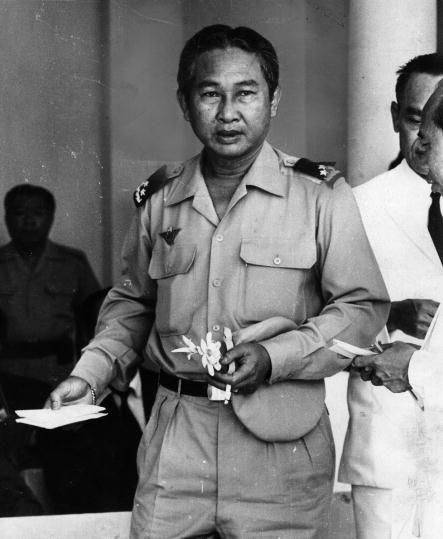 Like many Cambodian political figures, Lon Nol (1913-1985) was born into a mixed Cambodian-Chinese family. His father was a Khmer krom, and his maternal grandfather was a Chinese from Fujian province. After graduating from the Lyceum in Saigon, the young Lone Nol enrolled at the Royal Military Academy of Cambodia, and in 1937 he began serving in the French colonial administration. Lon Nol was an exemplary colonial servant. He participated in suppressing anti-French speeches in 1939 and did a lot to curb the national liberation aspirations of his people. For this, the colonialists valued Lon Nol. In 1946, thirty-three-year-old Lon Nol took over as governor of Kratie province. Lon Nol did not hide the right monarchical views, but at the time he sought to position himself as a follower of Norodom Sihanouk. In 1951, Mr. Lon Nol led the Cambodian police, and in 1952, while serving as a lieutenant colonel, he began serving in the Cambodian army. But most rapidly the career of a young officer went up after the proclamation of independence of Cambodia. In 1954, Mr. Lon Nol became the governor of the province of Battambang, a large region in the north-west of the country, on the border with Thailand, also called the “rice bowl of Cambodia”. However, as early as the next 1955, Battambang Governor Lon Nol was appointed to the post of Chief of the General Staff of the Cambodian Army. In 1959, Mr. Lon Nol assumed the post of Minister of Defense of Cambodia and was in this position for seven years - until 1966. In 1963-1966. the general also held the position of vice-premier in the Cambodian government. The political influence of Lon Nol, who was favored by American intelligence services, was especially strong in the second half of the 1960s. In 1966-1967, from October 25 to April 30, Lon Nol served as the country's prime minister for the first time. 13 August 1969 Mr. Norod Sihanouk reappointed General Lon Nol as head of the Cambodian government. This appointment Lon Nol and took advantage of their own interests. He made an anti-government plot, agreeing with Prince Sisovat Sirik Matak.
Like many Cambodian political figures, Lon Nol (1913-1985) was born into a mixed Cambodian-Chinese family. His father was a Khmer krom, and his maternal grandfather was a Chinese from Fujian province. After graduating from the Lyceum in Saigon, the young Lone Nol enrolled at the Royal Military Academy of Cambodia, and in 1937 he began serving in the French colonial administration. Lon Nol was an exemplary colonial servant. He participated in suppressing anti-French speeches in 1939 and did a lot to curb the national liberation aspirations of his people. For this, the colonialists valued Lon Nol. In 1946, thirty-three-year-old Lon Nol took over as governor of Kratie province. Lon Nol did not hide the right monarchical views, but at the time he sought to position himself as a follower of Norodom Sihanouk. In 1951, Mr. Lon Nol led the Cambodian police, and in 1952, while serving as a lieutenant colonel, he began serving in the Cambodian army. But most rapidly the career of a young officer went up after the proclamation of independence of Cambodia. In 1954, Mr. Lon Nol became the governor of the province of Battambang, a large region in the north-west of the country, on the border with Thailand, also called the “rice bowl of Cambodia”. However, as early as the next 1955, Battambang Governor Lon Nol was appointed to the post of Chief of the General Staff of the Cambodian Army. In 1959, Mr. Lon Nol assumed the post of Minister of Defense of Cambodia and was in this position for seven years - until 1966. In 1963-1966. the general also held the position of vice-premier in the Cambodian government. The political influence of Lon Nol, who was favored by American intelligence services, was especially strong in the second half of the 1960s. In 1966-1967, from October 25 to April 30, Lon Nol served as the country's prime minister for the first time. 13 August 1969 Mr. Norod Sihanouk reappointed General Lon Nol as head of the Cambodian government. This appointment Lon Nol and took advantage of their own interests. He made an anti-government plot, agreeing with Prince Sisovat Sirik Matak. Prince Sirik Matak (1914-1975) was another prominent figure in Cambodia’s rightist circles. By origin, he belonged to the royal dynasty Sisovat, which, along with the dynasty Norodom, had the right to the Cambodian throne. However, the French administration chose to secure the royal throne to Norodom Sihanouk, who was cousin of Syric Matak. Prince Matak, in turn, took the post of Minister of Defense of Cambodia, but then was sent to resign by Sihanouk. The fact is that Matak was categorically opposed to the policy of "Buddhist socialism" pursued by Sihanouk. He also rejected cooperation with the partisans of North Vietnam, whom Sihanouk favored. It was political differences that caused the disgrace of Prince Matak, who was appointed ambassador to Japan, China and the Philippines. After General Lon Nol was appointed prime minister of Cambodia, he himself chose Prince Sisowat Siryk Matak as his deputy. Becoming the vice-premier who oversaw, among other things, the economic bloc of the Cambodian government, Prince Matak began to denationalize the country's economy. First of all, it concerned the liberalization of the rules of the alcohol trade, the actions of banking institutions. Apparently, Prince Sirik Matak was determined to speedily depose his brother from the post of head of state. However, until the spring of 1970, the American leadership did not give consent to the coup, hoping to the last, hoping to “re-educate” Sihanouk and continue cooperation with the legitimate head of state. But Prince Sirik Matak managed to find evidence of Sianouk’s help to the Vietnamese partisans. In addition, Sihanouk himself distantly distanced himself from the United States.
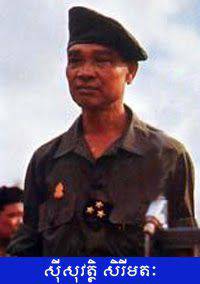
Military coup and the overthrow of Sihanouk
In March, 1970, the city of Sihanouk, embarked on a tour of Europe and the countries of the socialist camp. He visited, in particular, the Soviet Union and the People’s Republic of China. Meanwhile, taking advantage of the absence of Sihanouk in Cambodia, Sirik Matak decided to act. 12 March 1970. He announced the denunciation of trade agreements with North Vietnam, and the port of Sihanoukville was closed to Vietnamese ships. 16 March Thousands rally against the presence of Vietnamese partisans in Cambodia took place in Phnom Penh. At the same time, in view of the riots in the capital, the conspirators decided to arrest the high-ranking security officials who supported Sihanouk. Thus, one of the first to be arrested was General Oum Mannorin, the son-in-law of Norodom Sihanouk, who served as Secretary of State for Defense. 18 March, the country's capital Phnom Penh was surrounded by military units loyal to the conspirators. In fact, there was a military coup in the country. Soon, it was officially announced that Norodom Sihanouk was deprived of all the powers of the head of state. The power passed into the hands of General Lon Nol, although the head of the Legislative Assembly, Cheng Heng, became the formal head of Cambodia. As for Sihanouk, who was at the time of the coup abroad, he was given to understand that the prince would face the death penalty if he returned to Cambodia. In response, 23 in March, 1970, by Norodom Sihanouk, who was in China at the time, called on citizens to revolt against the junta of General Lon Nol. In the provinces of Kompong Cham, Takeo and Kampot, riots broke out with the participation of supporters of Sihanouk, who demanded the return of power to the legitimate head of state. During the suppression of riots in Kampong Cham province, the brother of General Lon Nola Lon Neal, who served as a police commissioner in the city of Mimot and owned large rubber plantations in the province, was brutally murdered. Lon Nil had a liver cut out, brought her to a Chinese restaurant and told her to cook. After preparation, the liver of the police commissioner was served and eaten.
However, the troops loyal to Lon Nolu acted no less brutally than the rebels. Against the rebels were thrown Tanks and artillery, thousands of people died or ended up in prison dungeons. On October 9, 1970, the Khmer Republic was proclaimed in the country. Cheng Heng remained its president in 1970-1972, and in 1972 he was replaced by General Lun Nol. Not only the political, but also the economic situation in the country as a result of the destabilization of the situation, has deteriorated sharply. After the call of Norodom Sihanouk and the suppression of uprisings in the province of Kampongtyam and several other regions of the country, a civil war broke out in Cambodia. Sihanouk appealed for help to the Cambodian Communists, who also enjoyed the support of China and were quite influential in the province and fighting force. In May 1970, the First Congress of the National United Front of Cambodia was held in Beijing, at which it was decided to create the Royal Government of Cambodia's National Unity. Peni Noot became its head, and Khieu Samphan, the closest friend and ally of Salot Sarah, took the post of Deputy Prime Minister and Minister of Defense. Thus, the Sihanoukites found themselves in close contact with the Communists, which contributed to a further increase in the influence of the latter on the Cambodian peasant masses.
Understanding perfectly the precariousness of his position, General Lon Nol mobilized the population into the country's armed forces. Significant support for the Lonnolites was provided by the United States of America and South Vietnam. Sihanouk opposed Lon Nola to the National Liberation Army of Cambodia, created on the basis of armed Khmer Rouge units. Gradually, the Khmer Rouge took all command posts in the National Liberation Army of Cambodia. Prince Sihanouk lost real influence and was in fact pushed aside on a secondary plan, and the leadership of the anti-Mon-nol movement was monopolized by the Communists. Detachments of South Vietnamese partisans and the North Vietnamese army, based in the eastern provinces of Cambodia, came to the aid of the Khmer Rouge. They launched an offensive against the positions of the Lonnolites, and soon Phnom Penh himself came under the blow of the communist forces.
US Cambodia Campaign
30 April - 1 May 1970 The USA and the Republic of Vietnam (South Vietnam) intervened in the events in Cambodia, which launched an armed intervention in the country. Note that the US recognized General Lon Nol’s Khmer Republic almost immediately after the military coup. 18 March 1970 was overthrown by Norod Sihanouk, and on March 10, the US State Department officially recognized the new Cambodian regime. 19 March 30. The US military command in South Vietnam received the right to authorize the introduction of US troops in Laos or Cambodia in case of military necessity. 1970 April 16. The government of Lon Nol appealed to the US authorities to provide the country with military assistance to fight the communist rebels. The US leadership responded to the request of the new Cambodian authorities immediately. Two days later, deliveries began weapons and ammunition from South Vietnam, from the bases of the American army, to Cambodia. Also in Cambodia began to carry out raids units of the South Vietnamese army, which was tasked to support the troops of Lon Nol in the fight against the communist rebels in the east of the country. The full support of the Lon Nol regime was also announced by the leadership of the SEATO military bloc, which united pro-American regimes in South-East Asia. The bloc’s general secretary, Jesús Vargas, stated that if the Cambodian government requests for help, SEATO will consider it in any case and provide military or other assistance. Therefore, when American troops invaded Cambodia on April 30, this was not a surprise to any of the parties to the conflict.
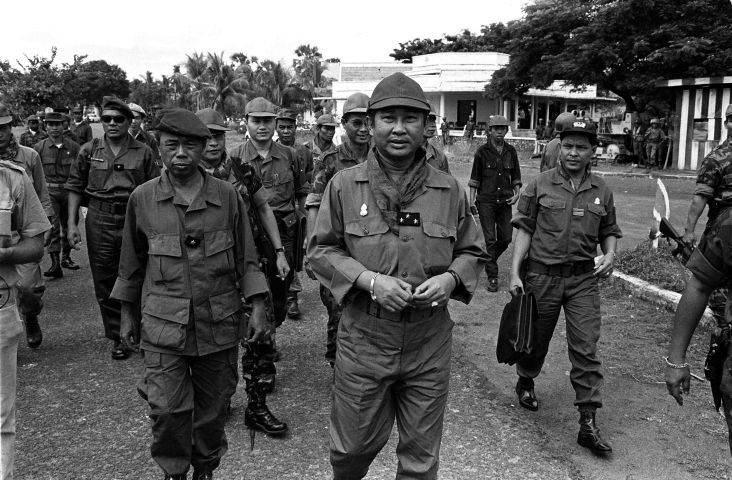
A total of 80-100 of thousands of American and South Vietnamese troops took part in the Cambodian campaign. Only from the American side were the forces of five army divisions engaged. At the same time, there were no major battles with the North Vietnamese army on the territory of Cambodia, since the North Vietnamese forces were engaged in combat operations against the forces of Lon Nol. The Americans and South Vietnamese managed to quickly capture a number of important bases of the NLFV, which were poorly guarded and were easy prey for the enemy. However, the outbreak of hostilities by the American army in Cambodia was met with indignation by the American public. In the United States began a massive student unrest that engulfed almost the entire country. In 16 states, authorities had to call in units of the National Guard to quell the protests. 4 May 1970 at the University of Kent national guardsmen, firing on a crowd of protesters, killed four students. Two more students died at Jackson University. The death of six young Americans has caused even greater heat of public outrage.
In the end, US President Nixon had to announce the imminent cessation of the military operation in Cambodia. On June 30, 1970, American troops were withdrawn from Cambodia, but the armed forces of South Vietnam remained in the country and took part in the hostilities against the Communists on the side of Lon Nol. Continued to actually participate in the civil war in Cambodia on the side of the Lon Nol regime and the American military aviationthat carried out the bombing of the country for three years. But, despite the support of American aviation and South Vietnamese troops, the Lon Nol regime was not able to suppress the resistance of the Cambodian communists. Gradually, Lon Nol’s troops went on the defensive, and the advancing Khmer Rouge repeatedly bombarded the country's capital, Phnom Penh.
The civil war was accompanied by the actual destruction of the socio-economic infrastructure of Cambodia and the massive displacement of the population to the cities. Since the eastern provinces of the country, located on the border with Vietnam, were subjected to the greatest bombings by American aircraft, many civilians of them fled to Phnom Penh, hoping that the Americans would not bomb the capital of the Lonnol regime. In Phnom Penh, refugees could not find work and decent housing, “enclaves of poverty” were formed, which also contributed to the spread of radical sentiment among new settlers. The population of Phnom Penh by 1975 increased from 800 thousand at the end of 1960-s. to 3 million. Almost half of Cambodia moved to the capital, fleeing from aerial bombardments and shelling. By the way, American aircraft dropped more bombs on the territory of Cambodia than on Hitler Germany for the entire period of the Second World War. Only in February - August 1973 of the United States Air Force dropped 257 465 tons of explosives into the territory of Cambodia. As a result of the bombing of American aircraft, 80% of industrial enterprises, 40% of roads and 30% of bridges were destroyed in Cambodia. Hundreds of thousands of Cambodian citizens became victims of American bombings. In total, as a result of the civil war in Cambodia, about 1 million people died. Thus, in small Cambodia, the United States pursued a policy of exterminating the civilian population, resorting to the commission of real war crimes, for which no one was ever held responsible. Moreover, a number of researchers believe that story “Polpotov's genocide” is for the most part a propaganda myth of the United States, invented to cover up American war crimes in Cambodia and hand over the victims of American aggression for the victims of the communist regime. In particular, this point of view is held by the well-known philosopher and linguist of left-wing views, Noam Chomsky, who is certainly difficult to suspect of sympathy for Pol Pot and polpotizmu.
"Khmer Rouge" and "Peasant Communism"
In turn, the American bombing of Cambodia, combined with the full economic and social fiasco of the Lon Nol government, contributed to the further spread of communist views among the Cambodian peasantry. As you know, the inhabitants of the Buddhist monarchies of Indochina have traditionally had great respect for their monarchs. Kings were literally idolized, and the Cambodian Prince Norodom Sihanouk was no exception. After the prince was overthrown by the clique of General Lon Nol, a significant part of the Khmer peasantry was in opposition to the new regime, because it did not want to recognize the imposition of a representative of the royal dynasty. On the other hand, the ideas of communism were considered to be consonant with the teaching of the arrival of Buddha Maitreya and the return of the “golden age” that was common in Buddhist countries. Therefore, for Khmer peasants there was no contradiction between the support of Prince Norodom Sihanouk and sympathies for the Khmer Reds. The growth of support from the peasant population was facilitated by the liberation from Lonnol’s regime of entire regions of Cambodia. In the liberated territories, communist power was actually established, expropriating the property of the landowners and forming their own organs of power and administration. Indeed, certain positive changes were observed in the life of the liberated regions. Thus, on the territory controlled by the Communists, national self-government bodies were created, classes were conducted in schools, even if they were not deprived of an excessive ideological component. The “Khmer Rouge” paid the most attention to propaganda among young people. Young people and adolescents were the most desired target of the Khmer Rouge, who distributed Mao Zedong's quotations and urged young people to join the ranks of the National Liberation Army of Cambodia. The army commander at this time was Salot Sar, who led the country's communist movement. As for Norodom Sihanouk, by this time he no longer had any influence on the processes taking place in Cambodia, as some European journalist stated, “they spat out me like a cherry seed” (about the Khmer Rouge, who actually pushed him guidance anti-Ninol movement). After the influence of Sihanouk was smoothed over, the followers of Salot Sarah attended to the extermination of Vietnamese influence in the ranks of the Cambodian Communist Party. The leaders of the Khmer Rouge, in particular Salot Sar himself and his closest comrade, Ieng Sari, were extremely negative toward Vietnam and the Vietnamese communist movement, which was also tolerated by the attitude of the Vietnamese as a people. It was precisely the anti-Vietnamese sentiments of Salot Sarah that contributed to the final delimitation of the Cambodian and Vietnamese communists in 1973. North Vietnam withdrew its troops from the territory of Cambodia and refused to support the Khmer Rouge, but by this time the supporters of Salot Sarah felt pretty good controlling the large part of the country and effectively cutting off Phnom Penh from the economically important agricultural provinces of Cambodia. In addition, Maoist China and Stalinist North Korea helped the Khmer Rouge.
It should be noted that the ideology of the Khmer Rouge, which was finally established by the middle of the 1970s, seemed extremely radical even in comparison with Chinese Maoism. Salot Sar and Ieng Sari respected Joseph Stalin and Mao Zedong, but advocated even more rapid and radical transformations, emphasizing the need and possibility of transition to a communist society without intermediate stages. The ideology of the Khmer Rouge was based on the views of their eminent theorists Khieu Samphan, Hu Nim and Hu Yong. The cornerstone of the listed authors' concepts was the recognition of the poorest peasantry as the leading revolutionary class in Cambodia. Hu Yun argued that in Cambodia, it is the poorest peasantry that is the most revolutionary and, at the same time, highly moral layer of society. But the poorest peasants, due to the specifics of their way of life, lack of access to education, do not have a revolutionary ideology. To solve the problem of the ideologization of the peasants Hu Yun proposed by creating revolutionary cooperatives in which communist ideology would be inculcated to the peasants. Thus, the Khmer Rouge played on the feelings of the poorest peasants, exposing them to the most worthy people of the country.
Another major program point of the Khmer Rouge, providing support to the peasant population, was the opposition of the village and the city. In the Khmer Rouge ideology, which absorbed not only Maoism, but also Khmer nationalism, the city was viewed as a hostile social environment. According to the theorists of the Cambodian Communists, Khmer society did not know the cities and was alien to the urban way of life. The urban culture in Cambodia was brought by the Chinese, Vietnamese, Siamese, while the real Khmer people always inhabited the villages and were suspicious of the urban way of life. In the concept of Salot Sarah, the city was presented as a parasite exploiting a Cambodian village, and city dwellers as a parasitic layer living at the expense of the peasantry. Such views impressed the poorest part of the Khmer population living in the villages and with envy toward urban residents, especially the successful merchants and intellectuals, among whom traditionally there were many Chinese and Vietnamese. The Khmer Rouge called for the elimination of cities and the relocation of all Khmer people to villages, which should have become the basis of a new communist society without private property and class differences. By the way, the organizational structure of the Khmer Rouge for a long time remained extremely secretive. Ordinary Cambodians had no idea that the organization is at the head of the National United Front of Cambodia and carries out armed resistance to Lonnolites. The Khmer Rouge was introduced as Angka Loeu, the Supreme Organization. All data on the organization of the Communist Party of Cambodia, the position of its top leaders were classified. So, Salot Sar himself signed his appeals “Comrade-87”.
The capture of Phnom Penh and the beginning of the "new era"
After the United States of America stopped bombarding the territory of Cambodia in 1973, the Lon Nol army lost its powerful air support and suffered one defeat after another. In January, the 1975 of the Khmer Rouge launched a massive attack on Phnom Penh, laying siege to the country's capital. There was no longer any real opportunity to defend the city from the armed forces controlled by Lon Nolu. General Lon Nol himself turned out to be much smarter and more perspicacious than his wards. 1 April 1975. He announced his resignation and fled from Cambodia, accompanied by 30 top officials. Lon Nol and his retinue first landed at Utapao base in Thailand, and then, through Indonesia, left for the Hawaiian Islands. Other prominent figures of the Lonnol regime remained in Phnom Penh - either they did not have time to escape, or they did not fully believe that the Khmer Rouge would deal with them without any regret. Following the resignation of Lon Nol, interim President Sau Kham Khoi became the formal head of state. He tried to transfer the real power to the leader of the opposition Democratic Party of Cambodia, Chau Sau, whom he had chosen for the post of prime minister. However, Chau Sau was immediately removed from power by a military junta led by General Sak Sutsakhan. But the remnants of the Lonnol army failed to rectify the situation - the fall of the capital was inevitable. This, in particular, testified further actions of the American leadership. 12 On April 1975, Operation Eagle Pull was conducted, as a result of which US Marine Corps and Air Force helicopters evacuated personnel from the US embassy, citizens of the United States and other states, and only about 250 people who wanted to leave the country. . The latest attempt by the United States to prevent communists from seizing power in Cambodia was the appeal of American representatives to Prince Norodom Sihanouk. The Americans asked Sihanouk to arrive in Phnom Penh and stand at the head of the state, having prevented bloodshed by the power of his authority. However, Prince Sihanouk refused to prudently - obviously, he was well aware that his influence was not comparable with the past decade, and it’s generally better not to get involved with the Khmer Rouge.
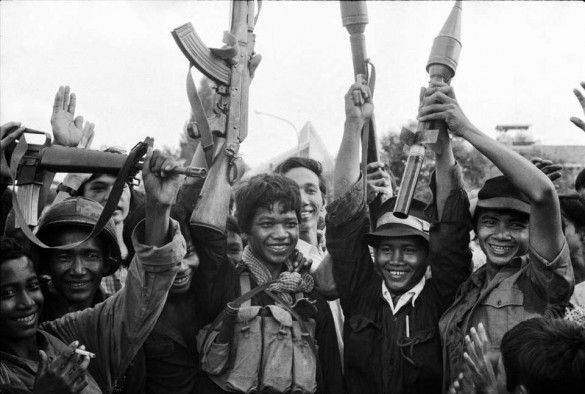 17 April 1975. The Khmer Rouge troops entered Phnom Penh, the capital of Cambodia. The government of the Khmer Republic capitulated and power in the country passed into the hands of the National United Front of Cambodia, in which the Red Khmers played the main role. The city began the massacre of officials Lonnolovsky regime, officers of the army and police, representatives of the bourgeoisie and intellectuals. One of the first victims of the Khmer Rouge was the country's top leaders, Prince Sisovat Syrik Matak and brother Lon Nola Long Boret, from 1973 to 1975. who served as prime minister of the Khmer Republic. Sisovat Sirik Matak received on the eve of the assault on Phnom Penh by the Khmer Rouge an offer from the American ambassador, John Gunther Dean, to evacuate from the city and thereby save his life. However, the prince refused and sent a letter to the US ambassador as follows: “Your Excellency and friend! I think you were completely sincere when in your letter they suggested that I leave. I, however, cannot act so cowardly. As for you - and especially your great country - I never for a second believed that you could leave the people who chose freedom to be in trouble. You refused to protect us, and we are powerless to do anything about it. You are leaving, and I wish you and your country to find happiness under this sky. And keep in mind that if I die here in the country I love, it doesn’t matter, for we are all born and must die. I made only one mistake - I believed in you [the Americans]. Please accept, Your Excellency and dear friend, my sincere and friendly feelings ”(quoted in: Orlov A. Iraq and Vietnam: do not repeat mistakes // http://mignews.com/news/analitic/world/170907_125617_08173.html ).
17 April 1975. The Khmer Rouge troops entered Phnom Penh, the capital of Cambodia. The government of the Khmer Republic capitulated and power in the country passed into the hands of the National United Front of Cambodia, in which the Red Khmers played the main role. The city began the massacre of officials Lonnolovsky regime, officers of the army and police, representatives of the bourgeoisie and intellectuals. One of the first victims of the Khmer Rouge was the country's top leaders, Prince Sisovat Syrik Matak and brother Lon Nola Long Boret, from 1973 to 1975. who served as prime minister of the Khmer Republic. Sisovat Sirik Matak received on the eve of the assault on Phnom Penh by the Khmer Rouge an offer from the American ambassador, John Gunther Dean, to evacuate from the city and thereby save his life. However, the prince refused and sent a letter to the US ambassador as follows: “Your Excellency and friend! I think you were completely sincere when in your letter they suggested that I leave. I, however, cannot act so cowardly. As for you - and especially your great country - I never for a second believed that you could leave the people who chose freedom to be in trouble. You refused to protect us, and we are powerless to do anything about it. You are leaving, and I wish you and your country to find happiness under this sky. And keep in mind that if I die here in the country I love, it doesn’t matter, for we are all born and must die. I made only one mistake - I believed in you [the Americans]. Please accept, Your Excellency and dear friend, my sincere and friendly feelings ”(quoted in: Orlov A. Iraq and Vietnam: do not repeat mistakes // http://mignews.com/news/analitic/world/170907_125617_08173.html ). When the Khmer Rouge broke into the capital of the country, Sisovat Sirik Matak nevertheless attempted to escape. He fled to the hotel Le Phnom, where the staff of the Red Cross mission worked. However, as soon as they learned that the name of Shirik Matak was on the list of the “seven traitors” who had been sentenced to death by the Khmer Rouge, they refused to let him in, caring about the fate of the other wards. As a result, Sirik Matak was in the French embassy, where he sought political asylum. But, as soon as the Khmer Rouge learned of this, they demanded that the French ambassador immediately extradite the prince. Otherwise, the militants threatened to launch an assault on the embassy and capture the prince by force. Also taking care of the safety of French citizens, the French ambassador was forced to hand over Prince Sisowat Syrik Matak to the Khmer Rouge. 21 April 1975: Prince Sisowat Syrik Matak and Prime Minister Lon Boret were executed with their family at the Cercle Sportif Stadium. According to Henry Kissinger, Prince Sisovatu Sirik Mataku was shot in the stomach and left without medical assistance, as a result of which the unfortunate suffered for three days and then died. According to other sources, the prince was beheaded or shot. The direct management of the massacre of Lonnol officials was carried out by the “Committee for the Enemy of the Enemies”, located in the building of the Monorom Hotel. He was led by Coy Thuon (1933-1977), a former school teacher from Kompong Cham province, who from 1960 participated in the revolutionary movement and was elected to the Communist Party of Cambodia in 1971. The strange nationalist group MONATIO (National Movement) was also destroyed by the Khmer Rouge — an organization that emerged in the last months of the siege of Phnom Penh, sponsored by Lon Nol’s third brother, Lon Non, member of the National Assembly of Cambodia. Despite the fact that the activists of MONATIO tried to join the Khmer Rouge, the Communists opposed the dubious cooperation and quickly dealt with all those who came out under the flag of MONATIO. Then this organization was declared controlled by the US CIA and acting to disorganize the revolutionary movement in the country. As for the deputy Lon Nona, he, together with his brother Lon Boret and Prince Sirik Matak, was executed at the Pnom Penh stadium at Cercle Sportif.
"The village surrounds the city"
It should be noted that the inhabitants of Phnom Penh met the Khmer Rouge enthusiastically. They hoped that the Communists would be able to restore order in the city in which gangs of felons and deserters from the Lonnol army were operating. Indeed, from the first days of its presence in Phnom Penh, the Khmer Rouge began to establish a revolutionary order in the capital. They destroyed criminal gangsterism, shooting or beheading on the spot caught marauders. At the same time, the Khmer Rouge themselves also did not disdain the looting of the urban population. Recall that the backbone of the Khmer Rouge detachments were young people and teenagers from the most backward poor provinces of North-Eastern Cambodia. Many soldiers were on 14-15 years. Naturally, Phnom Penh, in which they had never been, seemed to them to be a real “paradise”, where they could make a good living with the well-to-do metropolitan population. First of all, the Khmer Rouge began to seize weapons and vehicles from the population. As for the latter, they took away not only cars and motorcycles, but also bicycles. Then the “purges” of the city from the “Lonnolites” began, to which all those who had any relation to the state or military service in the Khmer Republic were referred. "Lonnolovtsev" sought out and killed on the spot, without trial. Among the dead there were many absolutely ordinary citizens, even representatives of the poor strata of the population, who in the past could serve in the Lonnolovskaya army on conscription. But the real nightmare for the inhabitants of Phnom Penh began after the Khmer Rouge fighters began voicing demands to leave the city in megaphones. All citizens were ordered to immediately leave their homes and leave Phnom Penh as “the abode of vice in which money and commerce rule.” Former residents of the capital were asked to independently obtain food in the rice fields. Children were separated from adults, because adults either could not be re-educated at all, or could be re-educated only after a long stay in “cooperatives”. All those who disagreed with the actions of the Khmer Rouge were inevitable reprisals on the spot - revolutionaries did not stand on ceremony not only with representatives of the old Lonnol power, but also with ordinary civilians.
Following Phnom Penh, actions to evict the citizens were held in other cities of the country. This was how the social experiment on the total destruction of cities and the relocation of all inhabitants to rural areas, which had no analogues in the modern world, was carried out. It is noteworthy that during the eviction of its inhabitants from Phnom Penh, their elder brother Salot Sara Salot Chhai (1920-1975), an old communist to whom Salot Sar largely owed his career in the Cambodian revolutionary movement, died. At one time, Salot Chhai introduced Salot Sarah into the circles of veterans of the national liberation movement "Khmer Issarak", although Chhai himself was always in more moderate positions than his younger brother. Under Sihanouk, Chhai was in prison for political activities, was then released, and by the time the Khmer Rouge practiced Phnom Penh, he continued his left-wing social and political activities. When the Khmer Rouge leadership ordered the residents of Phnom Penh to leave the city and move to the countryside, Salot Chay was among other residents and, apparently, was killed during the “march to the village.” It is possible that he could have been killed by the Khmer Rouge on purpose, since Salot Sar never sought to ensure that Cambodians knew about his family and origin. However, some modern historians claim that the resettlement of citizens from Phnom Penh to the villages was not accompanied by massacres, but was peaceful in nature and was due to objective reasons. First, the Khmer Rouge feared that the capture of Phnom Penh could lead to American bombardment of the city, which fell into the hands of the Communists. Secondly, in Phnom Penh, which was under a state of siege for a long time and supplied only by flights of American military transport aviation, famine would inevitably have started, since during the siege the food supply routes of the city were disturbed. In any case, the question of the causes and nature of the resettlement of urban residents remains debatable - as, indeed, the entire historical assessment of the Polpot regime.
To be continued ...
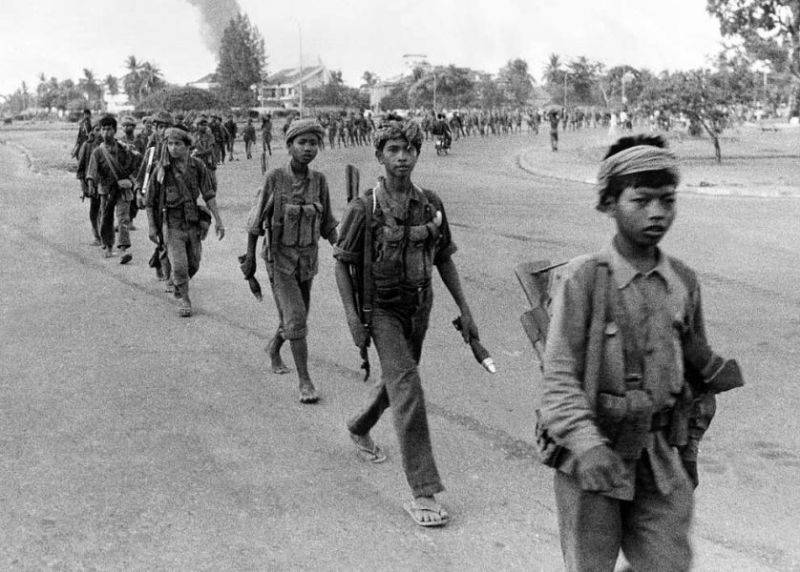
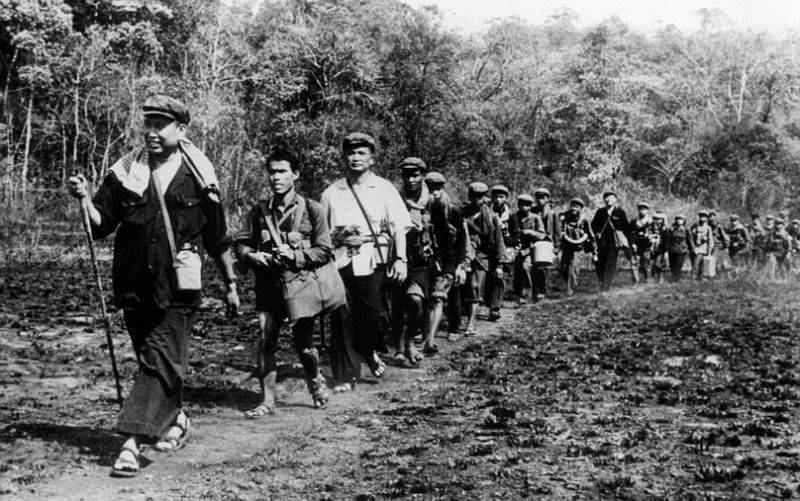
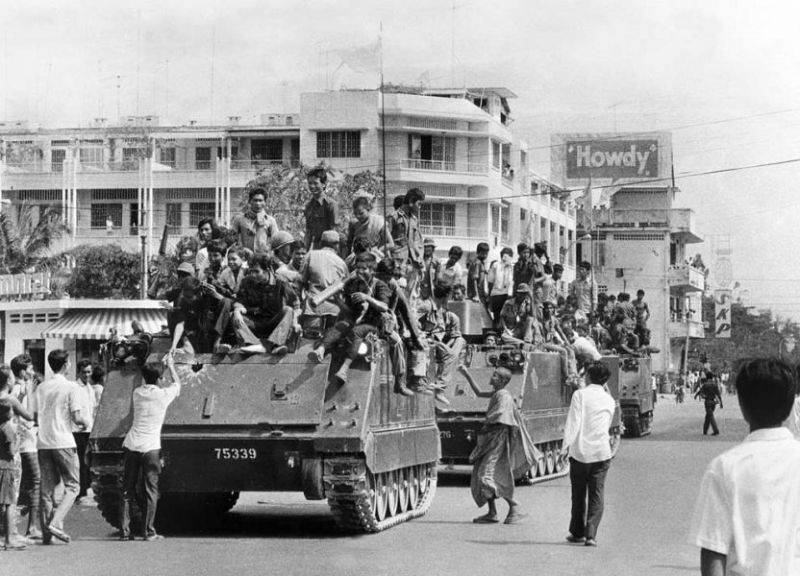
Information